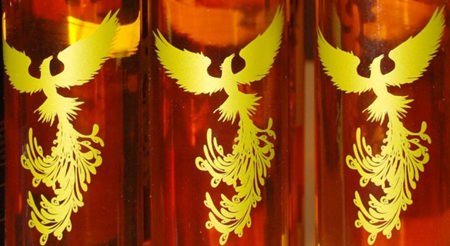How do you get eye-catching photographs? Even in camera clubs there are more dull photographs than eye-catchers. So what is the secret?
Amazingly, sometimes the commonest or simplest items can produce eye-catching photographs. No difficult shots, no special effects, no exotic lenses, just great shots by the simple technique of keeping one’s eyes open for good results.
The secret to all this is to remember repetitive shapes, contrasting shapes, contrasting colors and shadows. In other words, these types of images rely totally on vision and composition.

Remembering that the ‘rules’ of composition are merely there to be broken, very often a dramatic shot comes from trying something different.
The secret of great photography is not just in correct exposure and placement in the frame. You will get plenty of photographs that are perfectly exposed with the subject at the intersection of thirds, but dull. You need to remember contrast!
Contrast in photographic composition is an effective means of directing the viewer’s attention to the subject of interest. When I speak of contrast, I am referring to both tonal contrast, as in black-and-white photography, and color contrast as it relates to color photography.
In B&W photography, contrast is the difference in subject tones from white-to-gray-to-black or from the lightest tone to the darkest tone. In color photography different colors create the contrast.
Tonal contrast is generally expressed as high contrast which has extreme black and whites, or low contrast which has nothing but graduated greys.
Now you can wander around all day looking for a girl in a white swimsuit on a white sandy beach, or you can manipulate a photograph to produce that image. If you have an advanced digital camera, you can program it to record black and white only and then go from there, but if not, no fear, your software will allow you to do this post camera. First convert the color shot to grey scale, then play with the brightness and contrast, and you will very quickly produce a high contrast shot.
Now high contrast should not be confused with high key. A high key black and white shot is one where the photo shows mostly light tones. Conversely, a low key shot is one that has mainly dark tones. Low key and high key pictures convey mood and atmosphere. Low key suggests seriousness and mystery and is wonderful for Halloween photographs. However, high key creates a feeling of delicacy and lightness. A portrait of a blonde in white against a white background is an example of high key.
High contrast gives very black blacks and very white whites, and usually with nothing in between. Low contrast, on the other hand, still has blacks and whites, but everything is predominantly grey, giving a flat scene which still has tones, but in which highlights and shadows have very little difference in densities. In other words, all tones within the scene are very similar in appearance. However, remember that if you are shooting in automatic mode, the camera will be set to deliver 18 percent grey, and not black.
Now to contrast in color. This is where an artist’s color wheel comes in handy. By picking colors from opposite sides on the wheel, you immediately have stunning contrasts. Blue and yellow is a classic example. Another is bright red against a luminescent green background.
Cold colors (bluish) and warm colors (reddish) almost always contrast. Cold colors recede, while warm colors advance. Light colors contrast against dark ones, and a bold color offsets a weak color.
Color contrast is an effective compositional element in color photography, just as tone is in black-and-white photography. Colors with opposite characteristics contrast strongly when placed together. Each color accentuates the qualities of the other and makes the color images stand out dramatically. Color contrast is enhanced when you create the contrast of detail against mass. An example is a single, bright, red flower in a clear, glass vase photographed against a bright, green background.
The photograph used this week is an example of very high color contrast, so much so that only two colors matter. This was designed to be a photograph that hits you between the eyes.




